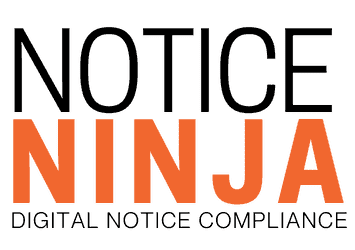Yes, NOTICENINJA is corporate tax notice compliance software that automates key workflows including notice assignments. The platform employs a rule-based system that can manage multiple level rules and ensure notices are directed to the appropriate stakeholder. As a result, you’ll never have to worry about notices being misdirected or slipping between the cracks.

Streamlining Form 1120 = Efficient Solutions for Corporate Tax Teams

07 October
The U.S. Corporation Income Tax Return, Form 1120 isn’t just another filing requirement. For corporate tax teams, especially those managing multiple entities or jurisdictions, it’s a high stakes balancing act involving reconciliation, regulatory risk, and relentless follow-up.
The form itself demands precision. But what comes after filing — notices, adjustments, inquiries, and refund delays — often creates more strain on tax operations than the filing itself. And while many teams have modernized their financial systems, the workflows tied to Form 1120 responses remain scattered, manual, and vulnerable to error.
Filing is Just the Beginning
Once Form 1120 is submitted, the real work often begins. IRS or state notices related to Schedule M-3 discrepancies, net operating loss (NOL) limitations, or estimated payment mismatches can follow weeks or even months later. Each one comes with its own clock ticking.
Common post-filing triggers include:
- Mismatch in book-to-tax reconciliations (especially for Schedule M-3 filers)
- Requests for clarification tied to dividend deductions or intracompany eliminations
- Refund checks held until documentation or Power of Attorney forms are submitted
- State-level adjustments in jurisdictions that don’t conform to federal treatment
- Amended return filings to correct year-end adjustments or entity-level misstatements
For teams filing across multiple jurisdictions or within a consolidated group, these issues don’t show up one at a time. They often arrive in waves with overlapping deadlines and limited context.
Where It Breaks Down
What makes Form 1120-related work so difficult isn’t just the complexity. It’s the outdated, fragmented processes that many tax departments still rely on. Email inboxes, shared folders, spreadsheets, and informal handoffs introduce more risk than control.
Here’s where most friction occurs:
- Decentralized intake: IRS letters, state notices, and refund checks are received across formats, departments, and locations.
- No centralized visibility: Stakeholders can’t easily see what’s resolved, what’s overdue, or where escalation is needed.
- Fragmented workflows: Amended returns, POAs, and DRD substantiation may be managed separately, increasing the likelihood of missed steps.
- Missed opportunities: Refund delays or penalty notices often stem from small process failures that go unnoticed.
The result is lost time, reduced confidence, and growing compliance risk.
The Volume Is Growing, and So Are the Stakes
Corporate tax professionals are managing more complexity than ever.
There are more entities under single corporate structures, more jurisdictions with their own rules, more scrutiny around permanent and temporary book-to-tax differences, and more internal coordination required to maintain defensible documentation.
When these components aren’t connected through a consistent process, even routine notices can become compliance risks or audit flags.
How Leading Teams Are Responding
Rather than reacting to each Form 1120 notice as an isolated event, high-performing teams are investing in connected, standardized workflows that span the entire post-filing process.
That includes:
- Centralized intake and tracking for all notices, whether federal, state, or local
- Smart routing based on tax type, entity, and jurisdiction
- Linked compliance workflows so that refund checks, amended returns, and POAs are tied to the originating notice
- Audit-ready documentation with every action logged and accessible
- Cross-departmental visibility that supports Finance, Legal, and Tax alignment
One senior tax leader in the construction industry shared:
“The platform is intuitive, reliable, and tailored to meet the complex needs of tax and compliance teams. Their proactive assistance ensures that our team stays on track and confident in managing notices efficiently.”
It’s Not Just About Software. It’s About Process.
The biggest gains don’t come from simply digitizing notices. They come from establishing reliable structure and control across all aspects of post-filing compliance.
It’s the difference between visibility and chasing answers. Between accurate documentation and rushed justifications. Between staying on track or risking penalties, interest, and audit exposure.
Some Final Thoughts on Form 1120
Form 1120 doesn’t end with a filed return. For most tax teams, that’s when the cycle of notices, discrepancies, and resolution really begins. Without a structured process, these follow-ups cost more time, invite more risk, and drain bandwidth from higher-value work like tax provision, M&A structuring, or audit readiness.
If your team is still managing post-filing notices through inboxes, spreadsheets, and informal workflows, this is an opportunity to rethink your approach. The return gets filed once. What happens next can shape your compliance posture for the rest of the year.
Want to see what an automated notice workflow looks like in action?
Schedule a walkthrough with NOTICENINJA or Download our Buyer's Guide.
RELATED POSTS
- Form 1120 Explained: What C Corporations Need to Know
- Your Guide to Filing an Amended 1120 Tax Return | Notice Ninja
- Understanding and Fixing Common Issues with Amended Return Notices
